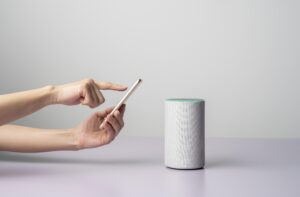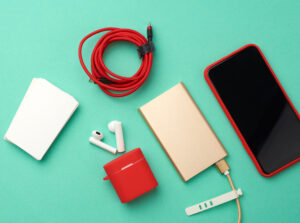Live broadcasting was once reserved for news programmes, but nowadays anyone with a phone and a decent internet service can go live. The rise of social media platforms combined with the immediacy of the digital age has contributed to the increasing popularity of mobile live streaming, and many influencers, average Joes and businesses alike can’t resist the lure of being able to broadcast experiences in real-time.
Connecting with your audience and sharing your experiences as they happen can benefit your brand, but only if your stream quality is up to par. In this complete guide to mobile live streaming, we’ll cover everything you need to know to successfully go live from your mobile phone.
Equipment breakdown
Mobile live streaming equipment is much less expensive than investing in a professional recording setup, but don’t be fooled into thinking that any smartphone will do the job well. To provide your viewers with quality videos, you’ll need a smartphone with a high-quality camera and microphone, as well as a stable internet connection.
- Camera quality: Look for mobile cameras with features such as high-resolution, optical image stabilisation, decent low-light performance and a wide-angle lens.
- Microphone quality: Consider investing in an external microphone for better sound quality, such as a Lavalier mic or a directional shotgun mic.
- Internet: Make sure your internet connection is stable and connect with Wi-Fi if possible or make use of high-speed cellular data connections.
- Tripod: To avoid shaky footage, consider investing in a tripod if you’re only broadcasting from one location, or a stabiliser if you need to move your phone frequently.
Test your setup
Before you go live, it’s important to test your setup by doing a dry run. Some things to test include:
- Phone camera and microphone: Make sure your mobile phone is recording properly, that the recorded audio is clear, and that the camera lens is clean.
- Lighting: Check the lighting in the location you’ll be recording and adjust your camera settings to accommodate the available light.
- Internet connection: Do an internet speed test from your phone to check the connection is stable and strong enough to handle live streaming.
Optimise your settings
To ensure a high-quality mobile live stream, you’ll also need to optimise the settings on your phone.
- Resolution: Set your camera to 720p or 1080p maximum even if your phone can capture videos in 4k.
- Framerate: Set your video recording settings to 30fps to provide a fluid stream without making the streaming file size too big.
- Focus mode: If your phone has a “focus mode” or “turn off notifications mode”, switch it on to avoid interruptions during your live stream.
- Background apps: Close any background apps that could drain your phone battery, slow down your phone or result in overheating.
By combining these mobile live-streaming tips with a bit of creativity, you can quickly transform your phone from a pocket accessory into a pocket production studio. So, what are you waiting for? Get out there, press record and live stream your next adventure.



